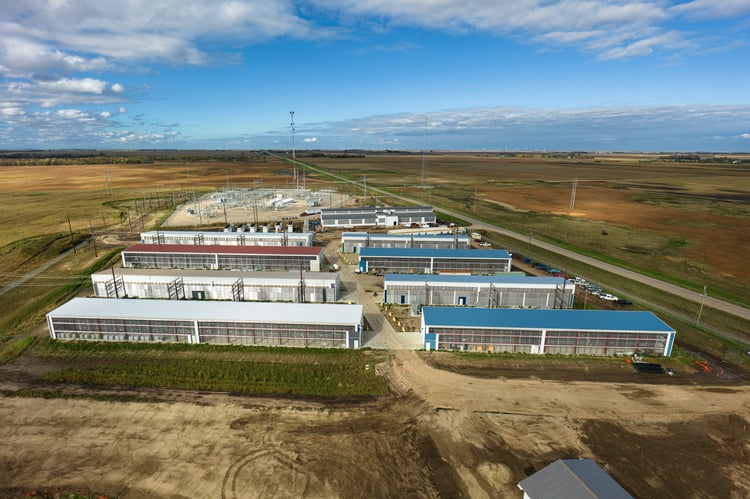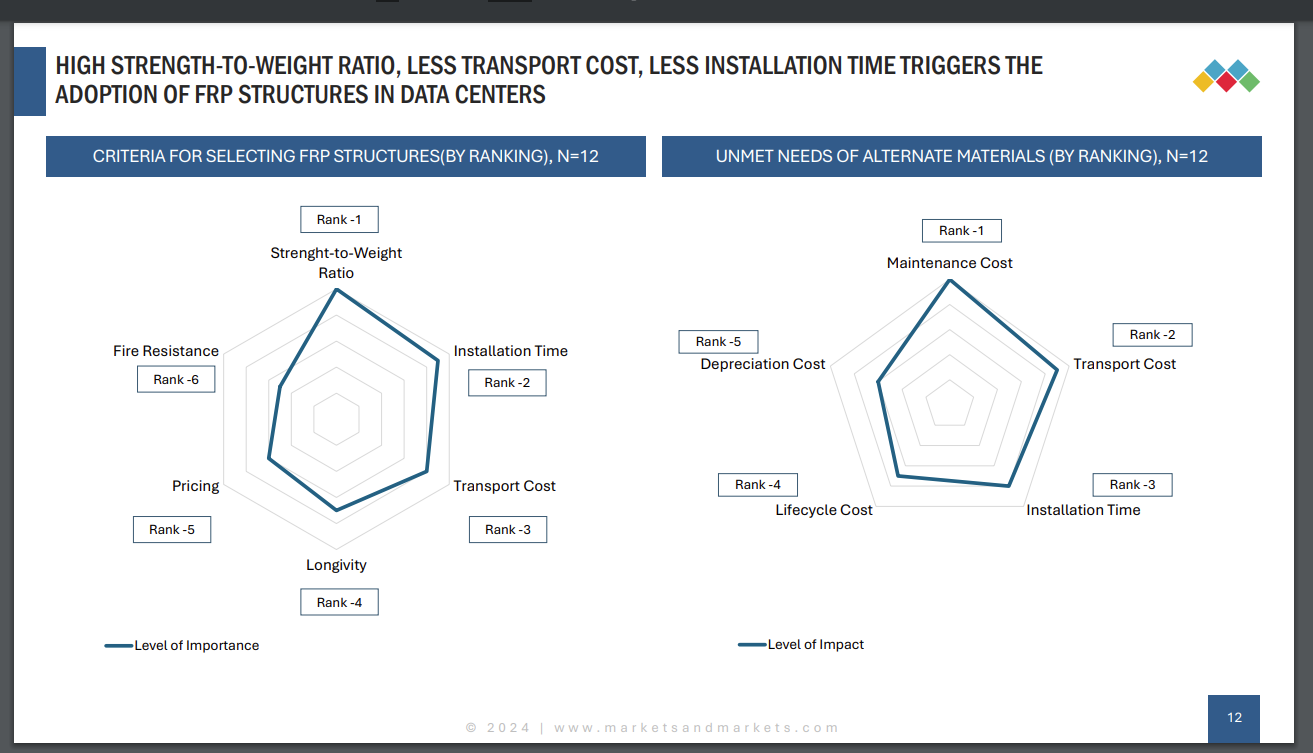As the demand for cloud computing, artificial intelligence, and digital services continues to soar,...
How to Build a Data Centre to Last
As the demand for cloud computing, artificial intelligence, and digital services continues to soar, the construction of new data centres has seen unprecedented growth. Major tech giants like Oracle, Microsoft, Amazon, and Meta are investing heavily in expanding their data centre infrastructure to meet the growing demand. With the increasing reliance on data centres, it's important to look at how to build a data centre that not only meet current needs but are also designed for long-term sustainability.
In this blog, we'll explore the factors that influence the lifespan of data centres and delve into how Glass Reinforced Plastic (GRP) can play a crucial role in constructing durable and efficient data centre infrastructure.
How Long Does a Data Centre Last?
The lifespan of a data centre can vary significantly depending on several factors. While the average lifespan is typically between 10 and 20 years, factors such as technology evolution, maintenance practices, energy efficiency, structural integrity, and regulatory changes can influence this duration.
- Technology Evolution: Rapid advancements in technology can render older data centres obsolete sooner. As new hardware and software solutions emerge, existing infrastructure may become less efficient or unable to support the latest applications.
- Maintenance: Proper maintenance and upgrades are essential for extending the lifespan of a data centre. Regular inspections, cleaning, and repairs can help prevent equipment failures and ensure optimal performance.
- Energy Efficiency: Older data centres may become less energy-efficient over time, leading to increased operational costs and environmental impact. Upgrading to more efficient equipment and implementing energy-saving measures can help prolong the useful life of a data centre.
- Structural Integrity: The physical infrastructure of a data centre, including the building itself and its supporting systems, plays a crucial role in its longevity. Regular inspections and maintenance can help identify and address any structural issues that may affect the data centre's lifespan.
- Regulatory Changes: New regulations or standards can impact the operational viability of older data centres. For example, changes in energy efficiency requirements or building codes may necessitate upgrades or replacements.

How to Build a Data Centre that Lasts: The Role of GRP
Glass Reinforced Plastic (GRP) has emerged as a valuable material for building data centres due to its exceptional durability and longevity. Unlike traditional materials like steel and concrete, GRP offers several advantages that can significantly extend the lifespan of data centre infrastructure.
- Corrosion Resistance: GRP is highly resistant to corrosion, making it ideal for environments with moisture, chemicals, and other corrosive agents. This is particularly important in data centres, where equipment can be exposed to humidity, cleaning agents, and potential spills.
- High Strength-to-Weight Ratio: GRP is strong yet lightweight, which reduces the stress on structural components and foundations. This can help prevent premature wear and tear, extending the lifespan of the building and its supporting systems.
- Fatigue Resistance: GRP materials have excellent fatigue resistance, meaning they can withstand repeated stress cycles without significant degradation. This is especially beneficial in data centres, where equipment may be subjected to vibrations, temperature fluctuations, and other cyclic loads.
- Environmental Resistance: GRP can withstand harsh environmental conditions, including UV radiation, extreme temperatures, and exposure to saltwater or industrial chemicals. This resistance helps maintain its structural integrity over time, even in challenging environments.
- Low Maintenance Requirements: Due to its durability and resistance to various forms of degradation, GRP requires minimal maintenance compared to traditional materials. This can reduce operational costs and downtime, ensuring that the data centre remains functional and efficient.
- Non-Conductive Properties: GRP is a non-conductive material, making it ideal for use in electrical and electronic applications. This property helps prevent electrical short circuits and other safety hazards, contributing to the long-term reliability of the data centre.
- Customisability and Versatility: GRP can be engineered to meet specific performance criteria, allowing for tailored solutions that maximise longevity for particular applications. This versatility makes GRP suitable for a wide range of data centre components, from flooring systems to enclosures and structural supports.

High strength to weight ratio and lower maintenance costs play a role in making GRP/FRP the preferred choice for data centre structures.
By incorporating GRP into the design and construction of data centres, facility owners can significantly enhance the durability and longevity of their infrastructure, ensuring that it remains reliable and efficient for years to come.
Where Can GRP Be Used When Building a Data Centre?
GRP offers a very wide range of applications within data centre construction, contributing to improved durability and longevity. Flooring systems, ceiling systems, work platforms, ladders, stairways and stair treads, guardrails and handrails, enclosures, and fencing can all be constructed from GRP. By incorporating GRP into these various components, data centre owners can create a facility that is not only robust but also requires minimal maintenance, reducing operational costs.
Build a Data Centre With the Help of Fibergrate
Building a data centre that can withstand the test of time requires careful planning and the selection of high-quality materials. Glass Reinforced Plastic (GRP) offers a compelling solution for extending the lifespan of data centre infrastructure. With its exceptional durability, corrosion resistance, and low maintenance requirements, GRP can help create data centres that are not only efficient but also sustainable for the long term.
Fibergrate has a long track record of implementing GRP infrastructure across a wide variety of industries. Consider Fibergrate as a partner in data centre excellence.
Topics: Electrical Equipment Fencing, GRP, Data Centre


